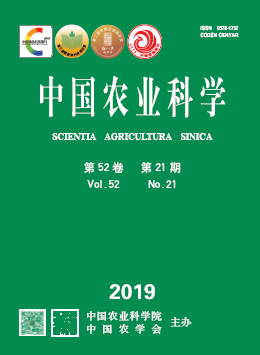【Objective】 China is a country with both high meat production and high consumption. In 2017, China’s meat production reached 85.581 million tons. From the perspective of the whole industry chain, the meat from the farmer to table must go through a variety of links, such as breeding, slaughtering, precooling, segmentation, transportation, retail, and storage, etc., degrees of food loss happens within each link mentioned above, especially from the links after slaughtering to retail which caused a huge waste of resources and environment. This study focused on five main links, including segmentation, precooling, transportation, retail/wholesale, and storage regarding to four products, including pork, beef, mutton, and chicken, to define the loss of pork, beef, mutton, and chicken in their respective industry chains, from production and consumption through whole-industry meat investigation, and to calculate their edible proportions based on consumption habits.【Method】 Based on the idea of systematically analysis, this study divided the whole meat supply chain into five links as segmentation, transportation, retail/wholesale, precooling, and frozen storage, which may be loss of meat. Under the consideration that the supply chain of consumption patterns as warm fresh pork, chilled fresh pork and frozen pork differs greatly, we first calculated the loss of the whole industry chain of each consumption pattern, and then calculated the weighted average of meat loss named comprehensive loss rate for each type of meat. The edible ratio has been collected based on the actual data after a long-term slaughter and deboning experience of slaughter plant. The research areas is mainly centralized in the main producing area for each type of meat, and selected typical enterprises, supermarkets and local markets in different scale as interview objects, and obtain first-hand data through one-on-one interviews and investigations.【Result】 Through field survey in 10 provinces/cities of Beijing, Sichuan, Chongqing, Shandong, Henan, Guangdong, Guangxi, Jilin, Inner Mongolia, Xinjiang, and 19 integrated enterprises, 7 slaughter enterprises and 16 terminal sales markets, the results showed that the current whole-link loss rates of pork, chicken, beef, and mutton in China were 8.1%, 11.22%, 1.47%, and 7.45%, respectively. In terms of meat circulation forms, the loss rates of warm fresh pork, chilled fresh pork and frozen pork were 2.69%, 4.12%, and 8.10%, respectively. The loss rates of warm fresh beef, chilled fresh beef and frozen beef were 7.17%, 8.68%, and 11.47%, respectively; the loss rates of warm fresh mutton, chilled fresh mutton and frozen mutton were 4.63%, 6.53%, and 7.45%, respectively; and the loss rates of chilled fresh poultry and frozen poultry were 6.31% and 11.22%, respectively. Combining the proportions of different consumption patterns, comprehensive whole-industry-chain loss rates of pork, beef, mutton, and poultry: 4.36%, 9.55%, 5.94%, and 9.30%, respectively, the carcass edible rates were 78.48%, 81.26%, 73.72%, and 68.55%, respectively; and the whole edible rates are 90.29%, 94.48%, 96.46%, and 78.91%, respectively.【Conclusion】 Due to varying eating habits, meat loss in China was significantly lower than that in European countries, the US, Japan, and other countries with high food consumption rates. The main causes of current Chinese meat loss included relatively low processing and the cutting technology of middle and small enterprises, lacking of refrigeration equipment in wholesale and retail links, the nature of frozen meat, and consumers’ preference for warm, fresh meat in many regions of China. In the long run, with the increase in the market share of cold fresh meat consumption, the improvement of the technical level of slaughtering and segmentation, and the improvement of refrigeration and storage facilities, meat loss within supply chain should have high potential to decrease.









